If you’re thinking of replacing your old bass subwoofer with a horn subwoofer but aren’t sure whether to go with a DIY folded horn or a tapped horn, a detailed comparison of both is required.
The main distinction is in their size; a folded horn offers great output efficiency with the same drivers but requires a large enclosure, whereas a tapped horn can deliver the same output efficiency in a small chamber with the same drivers.
So, if you’re curious to learn more about tapped and folded horn subs, keep reading because you’ve come to the right place to get the information you need to make an informed choice.
Tapped Horn VS Folded Horn Subwoofer
Efficiency
A tapped horn is comparable to a transmission line. It trades off size for efficiency so that you can get a limited cutoff in a smaller box but not as effective as a standard folded horn. It also has more distortion due to the high frequency artifacts.
It is possible to convert a folded horn into a tapped horn that is why you’ll never see a folded horn that isn’t more efficient and produces more sound when transformed into a tapped horn.
Anything that demonstrates that this is not the case is most likely due to a limitation in the Tapped horn design that is not present in the folded horn.
There can be other difficulties with tapped horns, like achieving smooth response over much bandwidth while keeping all that efficiency. However, they are currently the clear winners when it comes to efficiency and output and getting low.
And they benefit from arraying in the same ways that other speakers do, such as improved coupling and larger wavelengths.
Size
Tapped horns are smaller and lighter than traditional folded horn subwoofers. A Tapped Horn is a well-implemented backloaded horn. The folded horn, on the other hand, is a classic.
Tapped horns are created like a scoop with a long path length and high-frequency interference modes that produce large ripples at the upper end of the passband, but they can provide a deep extension in a small box.
Modern Tapped horns perform better due to their high compression ratios, but they require powerful drivers, which were simply not available when popular scoops.
On the other hand, the folded horns are larger in size than the advanced tapped horns. Folded horns are the best option if you want the highest quality and most efficiency outdoors or in an ample open space.
They must be quite large to be effective. The old CVs are too small. Stacking aids in this, but if the box is too small, it is too small.
Nothing compares to them in terms of low distortion and high power. However, the lower the required cutoff, the larger the cabinet should be.
However, if you want something compact and efficient, a tapped horn is the way to go.
Displacement And Drivers
Tapped horn necessitates a large displacement, stiff suspension, and low (.35 or lower) driver.
There are several 12″ to 21″ drivers that will work well in a tapped horn, and a tapped horn typically has a low cutoff around 1/3 wavelength of the horn.
Folded horns are efficient down to 1/4 wavelength horn length but require a more prominent rear chamber and mouth, which usually equates to a larger box for the same driver diameter. They get along well with qts drivers (total quality factor)
The sealed rear chamber also allows us to take full advantage of the excursion control provided by a 1/4 wavelength horn.
If you intend to provide at least 36 Sq ft of mouth area at every show (6flh with 24″x36″ mouths). I would definitely go with a folded horn.
Sound Quality
Of course, you’ll want to take a look at the sound quality of both of them. Choosing a low-quality subwoofer can cause even the best parts of the rest of your system to feel distorted and unsatisfactory.
With this in mind, a folded horn and a tapped horn function properly.
But, the main difference is in size; a folded horn provides good output efficiency with the same drivers but requires a large enclosure to do so, whereas a tapped horn can provide the same output efficiency in a small chamber with the same drivers.
For sure, you can put the money into a high-quality folded horn or tapped horn and achieve the desired results.
Nonetheless, it is important to understand how they fit into your sound system cohesively to truly determine the quality of sound they can provide.
When it comes to the sound quality of a tapped or folded sub, these devices are primarily used to boost the sound quality in your system from moderate to extraordinary.
Using these specialized devices that only focuses on low-frequency audio emissions can contribute to a wider range of audio frequencies in your system, inevitably improving sound quality.
Of course, this assumes that you should use a high-quality driver that has been well-designed and is set into the folded or tapped models. Despite these suppositions, the quality of sound these subwoofers can provide for the listener is excellent.
What Are Horn Subwoofers?
Tom Danley created these subwoofers; in fact, he never built one himself; instead, he created the conceptual design, which was freely distributed to the public, and proved to be impactful as the first DIY lab horn subwoofer.
A horn subwoofer aims to enhance the coupling between both the speaker driver and the air. It frequently gives the impression of amplifying the sound. Still, in reality, a properly designed horn causes the speaker cone to transfer more of the electrical energy in the voice coil into the air, giving the appearance of higher efficiency.
It is a heavy subwoofer designed to operate as four enclosures strapped together in a 2*2 “cube” configuration, increasing the adequate mouth size and achieving a low frequency of 32 Hz.
The Lab Sub is made to perform in groups of four from 80 Hz to 28 Hz. It is not intended to play above 80 Hz, so it has very little output above 85 Hz.
The design created by Danley was a 45-inch × 45-inch × 22.5 inches (114 cm × 114 cm × 57.1 cm) snail-shell folded-horn subwoofer using two 12-inch drivers at the horn throat.
Eminence, an American speaker company, created a custom 12-inch driver called the LAB12 to meet the specifications.
These subwoofers have many types, but the two most popular types in use are the following:
- Folded horn subwoofers
- Tapped horn subwoofer
In the past, most horn subwoofers used a folded design, which allowed for a longhorn path while minimizing size. Modern designs, on the other hand, are mostly tapped.
Horns are highly efficient, requiring less power to produce the same amount of output, and when multiples are coupled, they exhibit the 3dB gain per doubling of power but must also be run at a lower frequency with increased directivity.
The design also aids in the elimination of the enclosure’s resonance and the reduction of nonlinear distortion.
Horns are not tubes. They have a certain taper. The duct or tube is progressively increasing in its cross-section.
The horns function as an impedance transformer as a result of their taper or flare (aka coupler). They transition smoothly from the high impedance of the cone to the low impedance of the air.
We’ll go over both types in-depth, discussing how they’re made and how they work.
What are folded horn subwoofers?
Folded horn subwoofers are extremely efficient; a well-designed horn that can transmit more of the electric power in the voice coil into the air while using less power to produce more output.
However, due to their efficiency, these subs must be run at a lower frequency and with greater directivity.
Most folded horn subs, as the name implies, use a folded design to make them more practical in terms of space usage, but the larger they are, the better they work.
This type of design can remove the enclosure’s resonance and reduce nonlinear distortions.
The most common applications for folded horn subwoofers are in large indoor venues. There are some home theater owners who use them, but they are usually those with large rooms that are acoustically treated.
How Does A Folded Horn Subwoofer Work?
The folded horn speaker design is a variation of the standard horn design in which the movement of air is spread out over a more significant area and slows down.
This causes the horn to behave like a transformer, gradually transforming the “small amount of air moving quickly” into a “large amount of air moving slowly.”
The primary function of a horn is to improve the efficiency of a speaker. As a child, you may have tried folding a piece of paper into a cone shape and shouting through it to make it sound louder. This is a basic example of a real-life horn.
Other, more practical examples include the trumpet and trombone. Because the horns are of acceptable size, they are simply created for high and mid frequencies.
As the frequency decreases, the wavelength increases, as do the dimensions of the horn. The folded horn subwoofer plays a role here. Folding the horn makes better use of space, making the enclosure more manageable in size.
A real-life example would be the tuba, which is a low-pitched brass instrument. It employs a horn, but not a traditional one like the trumpet.
The tuba’s horn is not straight; instead, it is shaped like a snail to maximize space. A horn subwoofer is intended to move from a small to a large opening. You can fold it or make it straight, but the basic concept must remain the same.
The basic principle on which the folded horn relies on is impedance matching. The speaker is a mechanical system, which has a high impedance, versus the air, which has a low impedance.
When a wave traveling through a tube encounters an abrupt change in acoustic impedance, some of its energy is reflected back.
What Are Tapped Horn Subwoofers?
The tapped horn is a relatively obscure subwoofer arrangement, only recently brought to prominence by Tom Danley.
A Tapped horn is a resonant air column that uses both sides of the speaker cone, resulting in an output that is approximately 6 dB higher than the same speaker (of the proper parameters).
Unlike a “normal” horn, the Tapped Horn does not require a significant mouth exit to have a flat response in its passband.
The tapped horn is a configuration in which the driver radiates energy into the horn’s throat, a horn that expands along its length, and the tap is where the other side of the same driver’s cone radiates into a portion of the horn, typically near the mouth/exit.
They are designed in the shape of a scoop with a long path length and high-frequency interference modes that produce large ripple effects at the upper end of the passband, but they can provide a deep extension in a small box.
Like traditional folded horns, the tapped horn design has the advantage of eliminating enclosure resonance and reducing nonlinear distortions. It is, however, not as efficient as a folded horn.
Tapped horn subwoofers are commonly used for outdoor events, parties, and concerts, among other things.
How Does A Tapped horn subwoofer work?
A tapped horn design employs both sides of a high-powered, long-excursion driver in an enclosure ported to the horn, with one path length being extended and the other being short.
The two paths integrate into a phase at the horn’s mouth within a given frequency range. This opens up a wide range of possibilities, including increased efficiency, smaller enclosure size, and deeper extension.
A lower excursion is one of the most significant advantages of a tapped horn over other arrangements.
The acoustic load placed on the driver reduces excursion, resulting in higher maximum SPL and lower distortion.
This design is highly efficient because both sides combine to increase output while remaining in a small enclosure.
When using a tapped horn, be cautious of low frequencies that are outside of the passband as excursion rapidly increases. In this case, most people use an active high pass filter, but a passive high pass filter would work just as well.
A poorly designed Tapped Horn (or any badly designed enclosure) can have a “peaky” response, whereas an adequately designed Tapped Horn can have a flat response within its passband or can be built for a rising or falling response appropriate for its intended use, just like a sealed design.
Are Folded Horn And Tapped Horn subwoofers Worth It?
Whether you’re an audiophile or a cinephile, one of the most perplexing questions you’re likely to have is whether a folded and taped subwoofer is worth it.
If you’re on a shoestring budget, keep in mind that building these horns costs a lot of money. However, if you can manage to spend a lot of money and have some good wood cutting skills to make the horn enclosures.
In that case, it could be the best decision of your life, providing you with a three-dimensional sound experience you’ve never heard before.
Having said that, the three primary factors listed below will clearly show why a horn subwoofer is an essential component of audio equipment:
- It reveals sounds and emotions that your surround speakers and standard subwoofers cannot.
- It can produce a lot of bass without distorting it.
- It Unleashes the Sonic Potential of Your Surround Speakers.
To conclude
Tapped horns are smaller in size than traditional folded subwoofers. A Tapped Horn is a well-implemented backloaded horn. The folded horn, on the other hand, is a classic.
Modern Tapped horns perform better due to their high compression ratios, but they require powerful drivers.
On the other hand, the folded horns are larger in size than the modern tapped horns. They could be the best option if you want the best quality and most output outdoors or in a large open space.

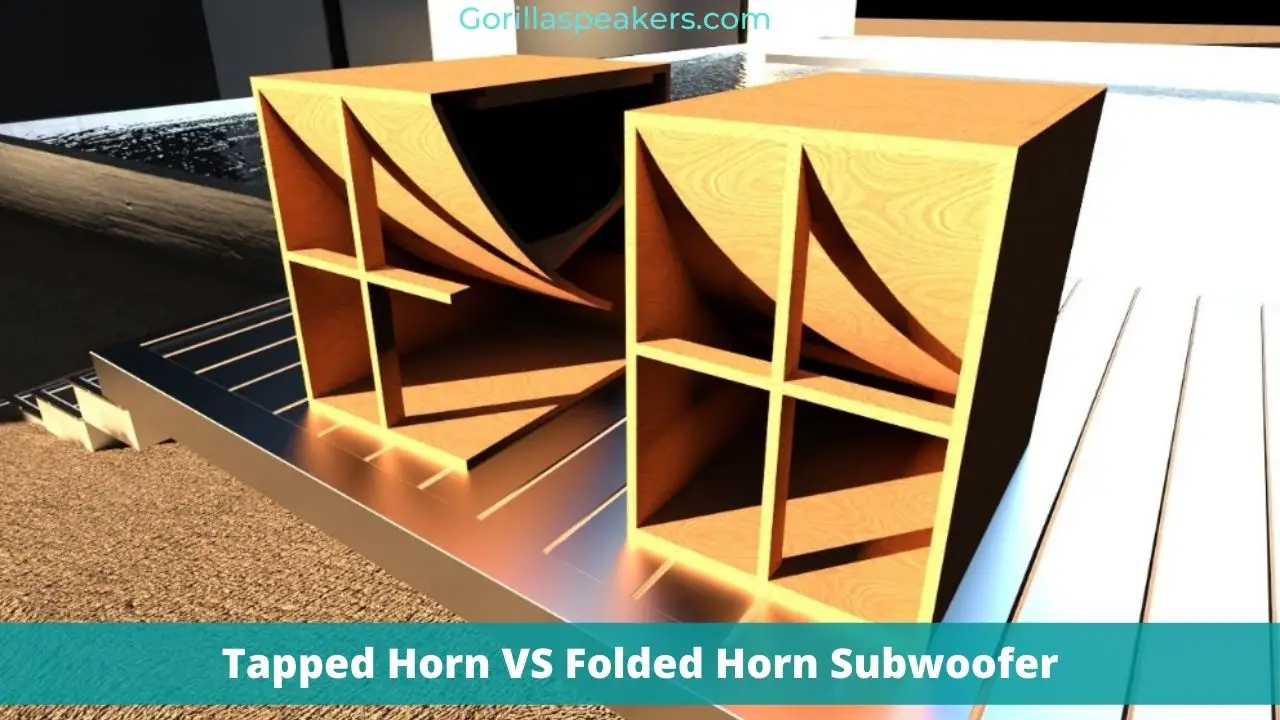
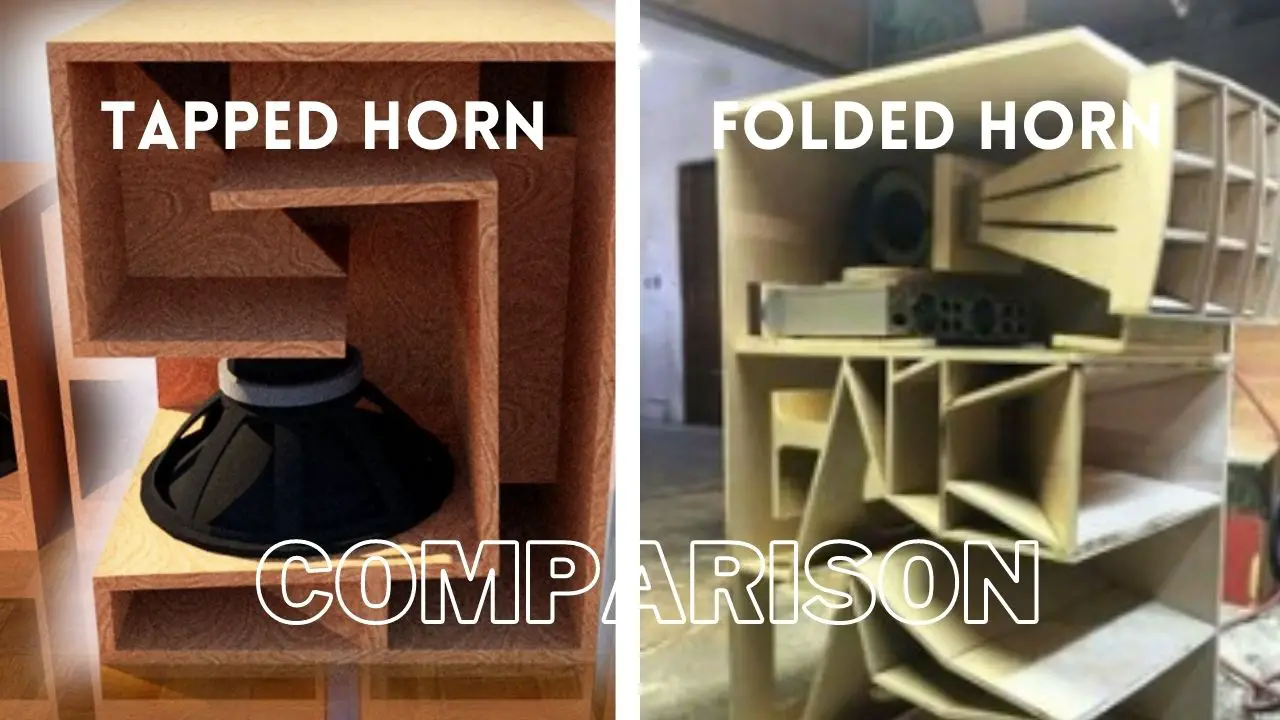
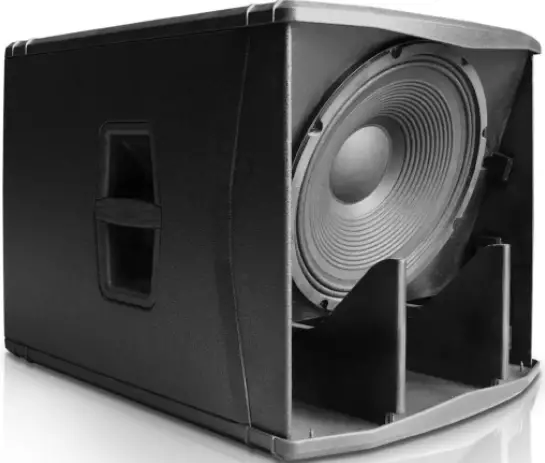
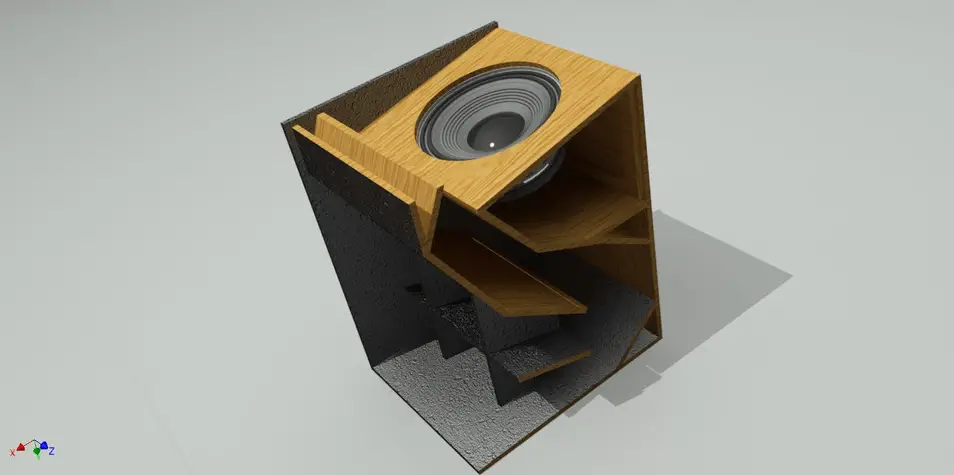
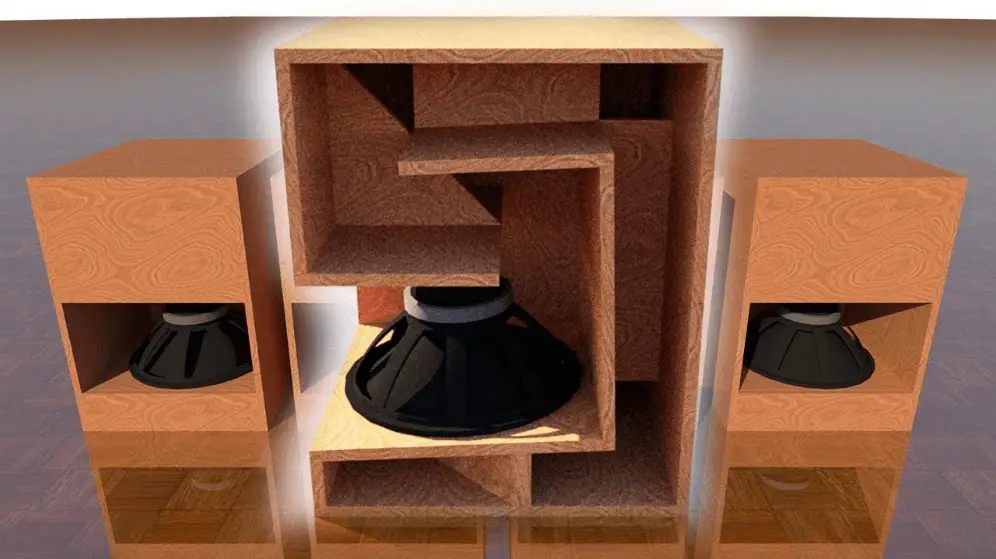
Thanks for taking the time to create this article. It was informative and helped me understand similarities of tapped horns with triple chamber bandpass enclosures.
Very well written piece. Nice to see someone breakdown the differences and things both enclosures have in common. im attempting to put my first horn together ‘ havent decided witch route ill go. Probably end up doing both before its all said and done. i have put together several enclosures over the years; quarter wave t-line subwofers are what i found to be the best sounding thus far.Look forward to my next enclosure probably try a tapped horn first in the meantime i have to figure out hornsrep ….thanks